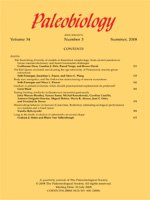The Neoselachii are a monophyletic group including all of the extant sharks and rays. They underwent rapid diversification throughout the Jurassic and Cretaceous, going from low-diversity assemblages of members of extinct orders in the Late Triassic to diverse assemblages containing representatives of most extant clades by the end of the Cretaceous. The known fossil record of Mesozoic neoselachians is composed largely of isolated teeth, with articulated skeletal remains being known from a limited number of sites. The small tooth size of a large proportion of neoselachians, including almost all taxa in existence prior to the mid Cretaceous, led to very poor representation in older publications. Their state of knowledge has improved dramatically since 1970 with the increased use of bulk sampling for isolated dental remains. Despite this, the high proportion of Lazarus taxa from some stages suggests that the state of knowledge is still intermittent. Increase in assemblage diversity throughout the Jurassic and Cretaceous suggests that radiation events resulted in real and dramatic increases in diversity, and that the perceived diversification is not an artifact of poor knowledge. Cladogenesis inferred from the fossil record typically compares more favorably with divergence predicted from molecular analysis, where Batoidea form a discrete basal clade, than with divergence predicted from morphological analysis, where Batoidea are considered a derived crown group within the Squalea. The timing of diversification events is discussed in light of the known fossil record, cladistically generated divergence times, and the paleoenvironmental distribution of faunas.
How to translate text using browser tools
1 March 2006
Diversification of the Neoselachii (Chondrichthyes) during the Jurassic and Cretaceous
Charlie J. Underwood
ACCESS THE FULL ARTICLE

Paleobiology
Vol. 32 • No. 2
March 2006
Vol. 32 • No. 2
March 2006





